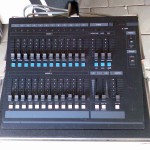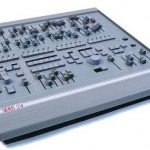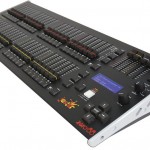Preset and Memory Lighting Consoles
There are many lighting consoles (desks) on the market ranging in size and features, with the smallest only being able able to dim 6 analogue channels, and the largest controlling 63+ universes (each with 512 Channels) of DMX, with the abilities to control intelligent lights, and media servers.
All lighting control consoles can control dimmers which control the intensity of the lights. Many modern consoles can also control intelligent lighting (lights that can move and change colors), fog machines and hazers, media servers, and other special effects devices.
Preset Consoles
Preset consoles are the most basic lighting consoles — and also the most prevalent in smaller installations. They consist of two or more identical fader banks, called scenes. The faders on these scenes can be manually adjusted. Each scene has the same number of channels which control the same dimmers. So the console operator can build a scene offline or in “”blind””, a cross-fader or submaster is used to selectively mix or fade between the different scenes.
Generally, at least with a preset board, the operator has a cue sheet for each scene, which is a diagram of the board with the faders in their positions as determined by the lighting designer. The operator sets the faders into their positions based on the cue sheets. Typically during a cue, the operator sets the next scene. Then, the operator makes the transition between the scenes using the cross-fader.
Preset boards are not as prevalent since the advent of digital memory consoles, which can store scenes digitally, and are generally much less cumbersome but more expensive than preset boards. Preset boards generally control only conventional lights; though some advanced hybrid consoles can be patched to operate intelligent lights in a round-about way by setting the control channels of the light to channels the preset board can control. This is however not recommended since it is a long, drawn-out, and cumbersome process.
Memory Consoles
Memory-based consoles have become very popular in almost all larger installations, particularly theatres. This type of controller has almost completely replaced preset consoles as controllers of choice. Memory consoles are preferable in productions where scenes do not change from show to show, such as a theatre production, because scenes are designed and digitally recorded, so there is less room for human error, and less time between lighting cues is required to produce the same result. They also allow for lighting cues to contain larger channel counts due to the same time savings gained from not physically moving individual channel faders.
Many memory consoles have a bank of faders. These faders can be programmed to control a single channel or a group of channels. The console may also have provision to operate in analog to a manual desk for programming scenes or live control. On some more advanced consoles, faders can be used to control effects, and chases (sequences of cues).


